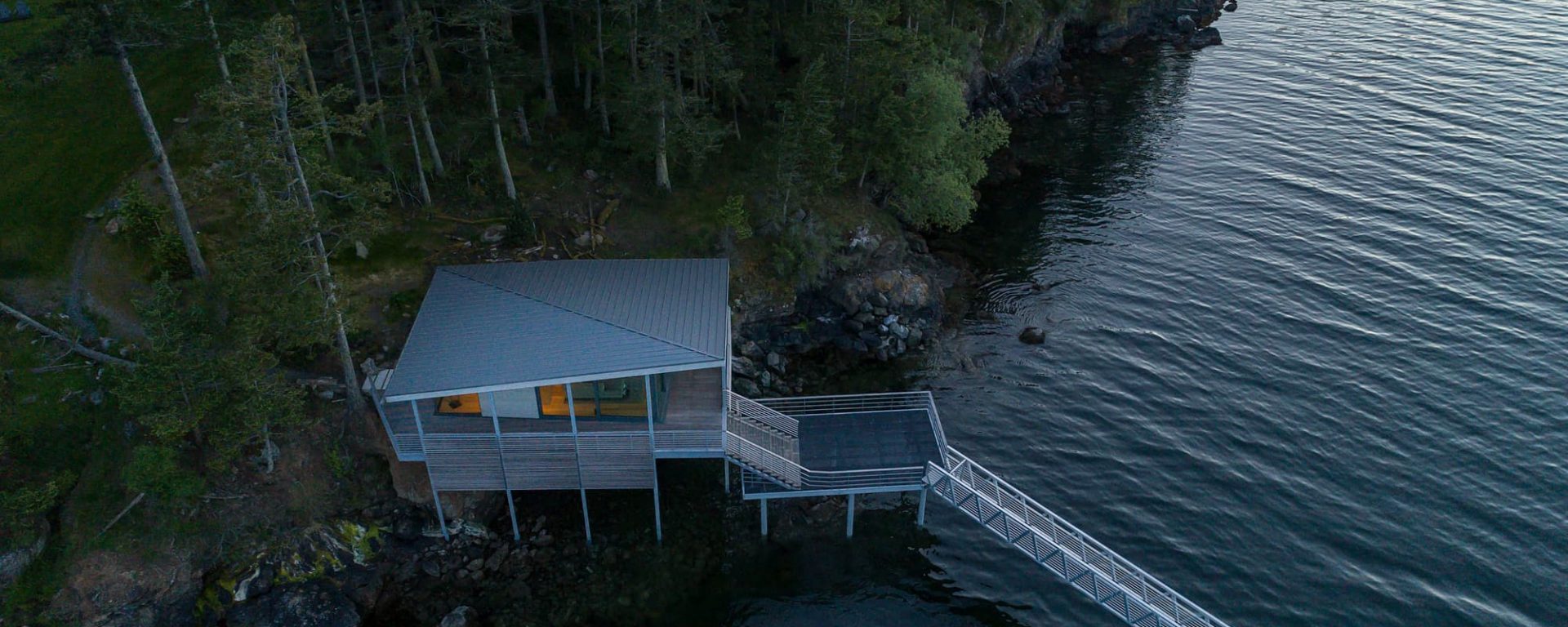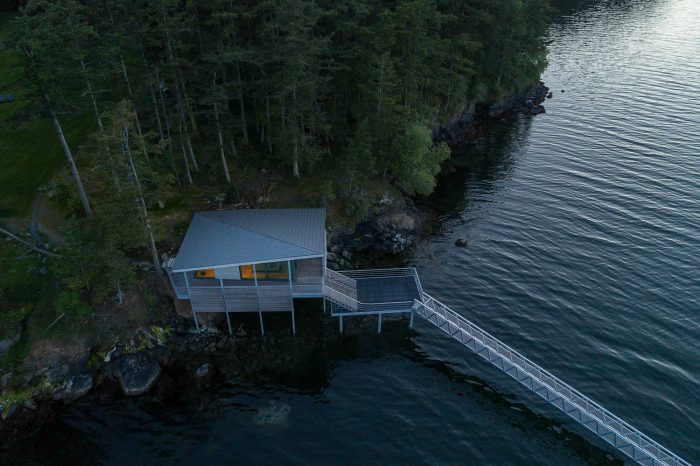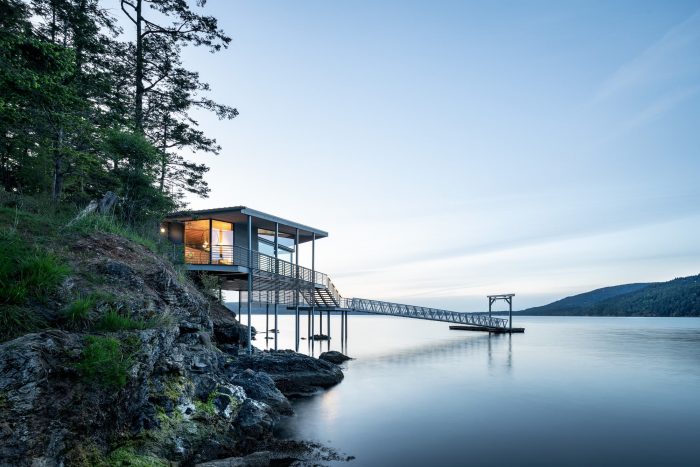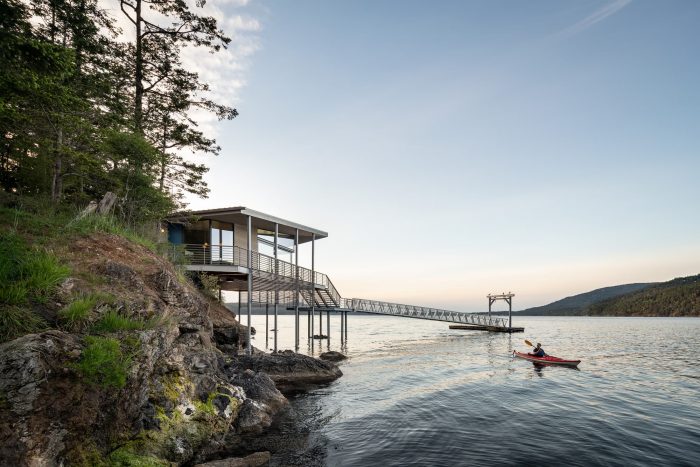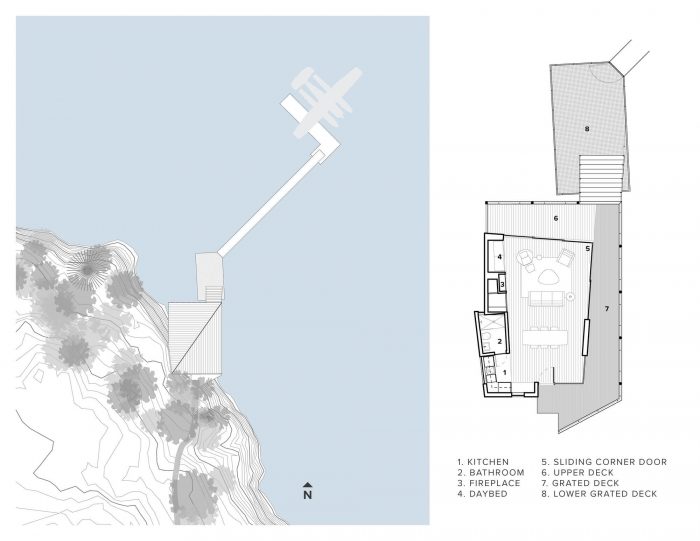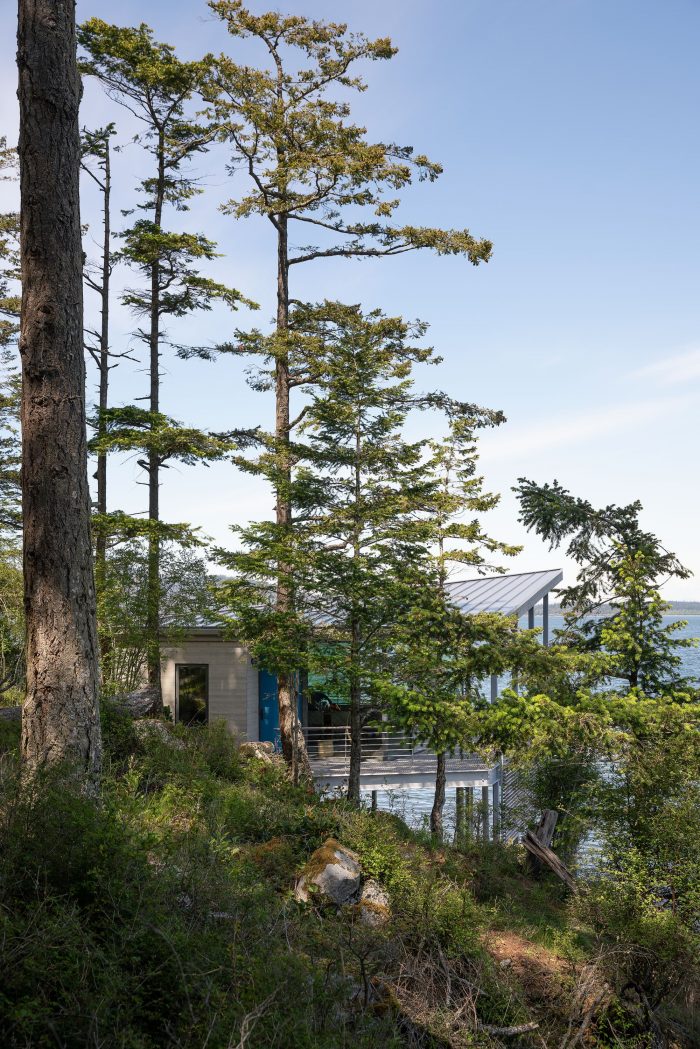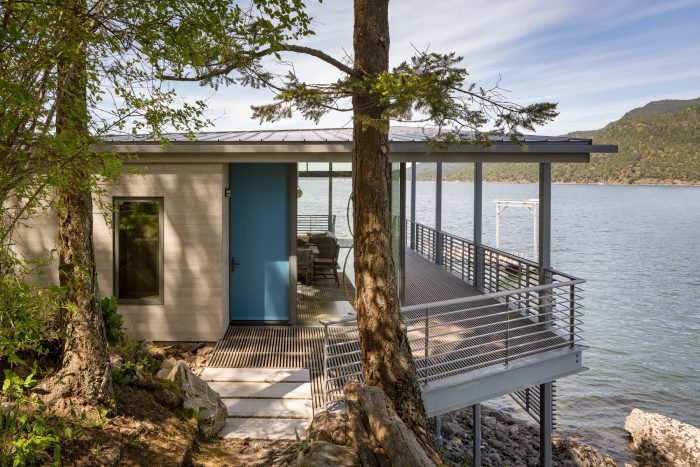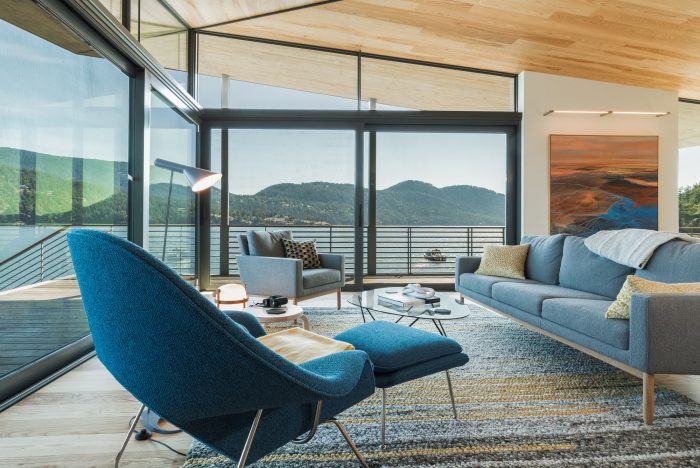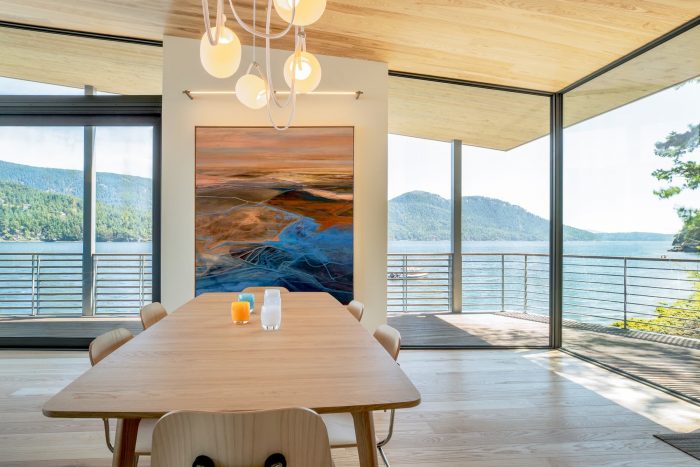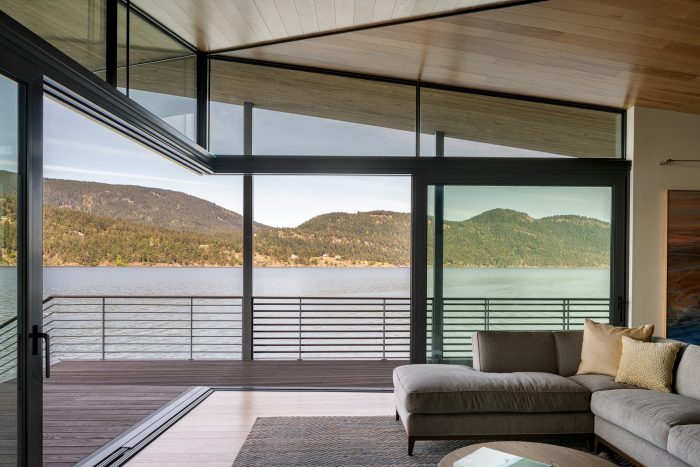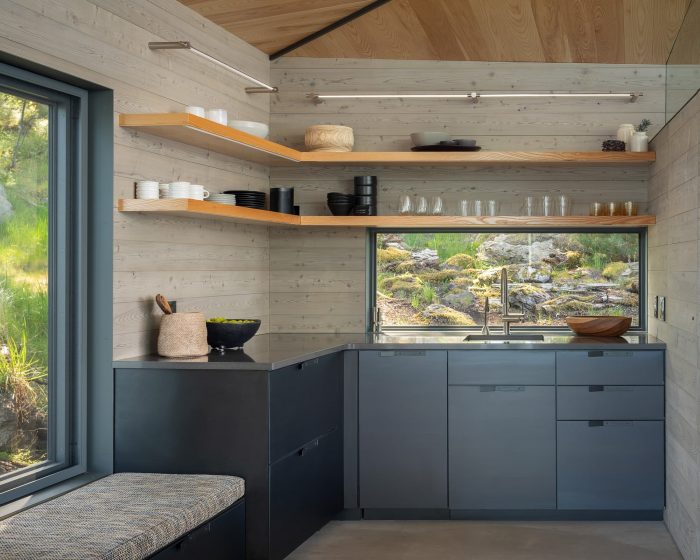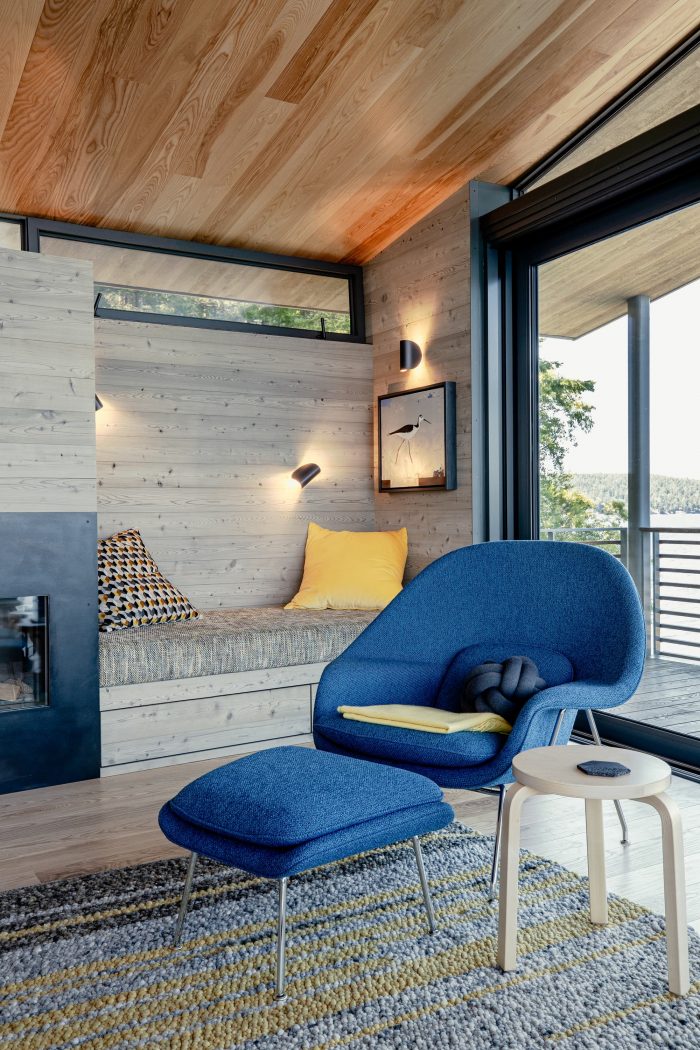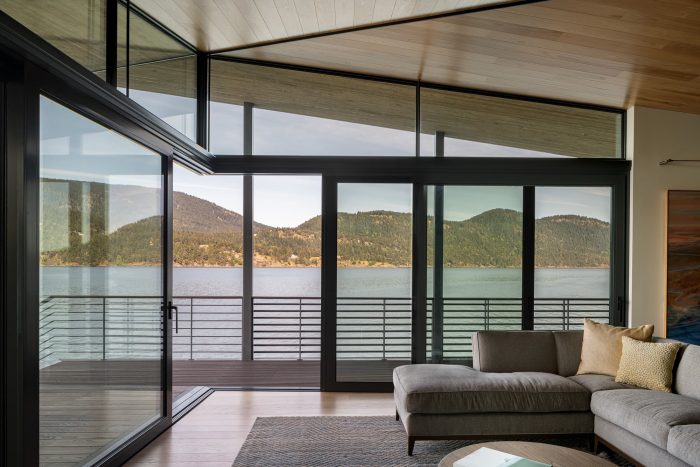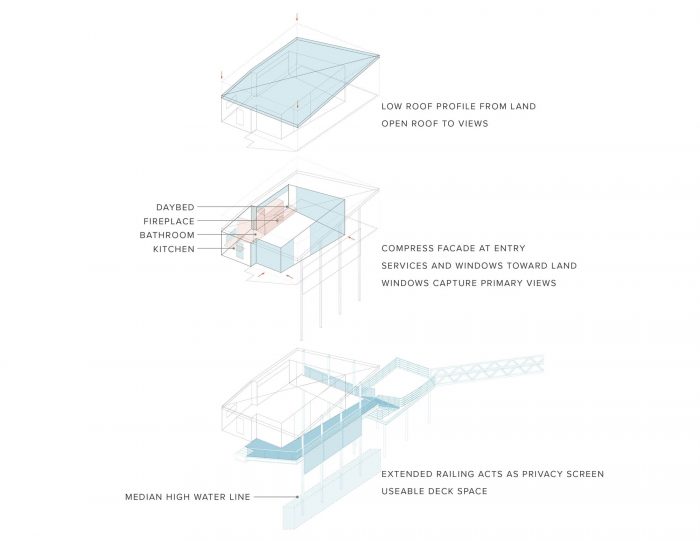船屋位于圣胡安群岛,首先是作为水和陆地之间的一个门槛,它通过为乘船或水上飞机到达的人提供陆地上的通道,以及通过其位置和形式象征性地拥抱了这个想法。它横跨了各种元素,提供了一个入口,也是早晨喝咖啡或与大家庭一起煮螃蟹的一个引人注目的地方。
Located in the San Juan Islands, the Boathouse stands foremost as a threshold between water and land, an idea it embraces literally by providing upland access to those arriving by boat or seaplane, and figuratively through its location and form. It straddles the elements, providing an entryway as well as a dramatic spot for a morning cup of coffee or a crab boil with the extended family.
船屋取代了一个破旧的、杂乱无章的结构。用一个建筑结构取代另一个建筑结构的策略旨在使海岸线自然化,将400平方英尺的混凝土和涂有火烟的桩子从水中移走,代之以支持新结构的4平方英尺的薄钢板。
The Boathouse replaces a dilapidated, haphazardly constructed structure. This replacement of one built structure with another was done with a strategy aimed to naturalize the shoreline, removing the 400 square feet of concrete and creosote-coated piles from the water and replacing it with the 4 square feet of thin steel that supports the new structure.
海岸线的恢复包括移除混凝土防波堤和大量的旧轮胎和旧结构地基捕获的碎屑,用本地岩石基质取代。新的码头和坡道经过精心调整,避开并跨越了鳗鱼草床,设计细节,如木栅甲板,是为了让光线通过结构渗透到下面的海洋生物。
The shoreline restoration included the removal of a concrete breakwater and a significant number of old tires and detritus captured by the old structure’s foundation, replacing it with a native rock substrate. The new dock and ramp were carefully tuned to avoid and span beyond the beds of eelgrass, and design details such as the wood-grated decking were crafted to allow light to permeate through the structure to marine life below.
当人们从陆地上接近船屋时,透过树木几乎看不到它;地形的倾斜和屋顶的几何形状将建筑隐藏在景观中。一进门,建筑就明显地向着萨利什海开放。灰白的天花板通过玻璃墙和滑动的玻璃角门与风景直接相连。服务设施被隐藏在一个木质的体量中,窗户被战略性地放置,以突出树梢和苔藓覆盖的石头的景色。钢制装饰物在木质体量中的缺口,使厨房、壁炉和书架变得清晰。
As one approaches the Boathouse from the land, it is barely visible through the trees; a dip in the topography together with the roof geometry serves to tuck the building into the landscape. Upon entry, the building opens dramatically to the Salish Sea. The ash ceiling draws a direct line to the view through glass walls and sliding glass corner doors. Services are tucked landward in a wood-clad volume, with windows strategically placed to highlight views of treetops and moss-covered stones. Steel accents notch into the wood volume to articulate the kitchen, fireplace, and shelving.
内部的语言延续到外部,但使用的是能够经受恶劣环境的弹性材料:光滑的白蜡天花板和地板过渡到粗糙的染色雪松和热改性的白蜡装饰板,而精致的透明雪松内部覆层延续到粗糙的紧结外部壁板。风化的木质栏杆向下延伸,模糊了结构立面的质量,并提供了对过往船只的隐私。
The language of the interior continues to the exterior, but with resilient materials able to weather the harsh environment: the smooth ash ceiling and floor transition to rough stained cedar and heat-modified ash decking, while the refined clear cedar interior cladding carries into the rough tight-knot exterior siding. The weathered wood railings extend down to blur the mass of the structure’s façade and provide privacy from passing boats.
船屋轻巧地降落在海的边缘,直接从它的周围环境中汲取美和意义,并创造了一个沉思、聚集和观察的地方。
Lightly landing at the edge of the sea, the Boathouse draws beauty and meaning directly from its surroundings and creates a place to contemplate, gather, and observe.
Architects: Prentiss + Balance + Wickline Architects
Area : 634 ft²
Year : 2021
Photographs :Andrew Pogue, Taj Howe
Manufacturers : Louis Poulsen, Taylor Metal Products, Carlisle Wide Plank flooring, Dynamic Fenestration, Element4
Landscape Collaborator : Green Man Landscaping
Structural Engineer Team : Harriott Valentine Engineers
Project Management : Bonewitz, LLC
Environmental Consulting : Jen-Jay, Inc.
Interior Design Partner : LeeAnn Baker Interiors
Principal Architect : Dan Wickline
Project Architect : Philip Burkhardt
Architect : Kelby Riegsecker
General Contractor : Dalgarno Construction
Country : United States

